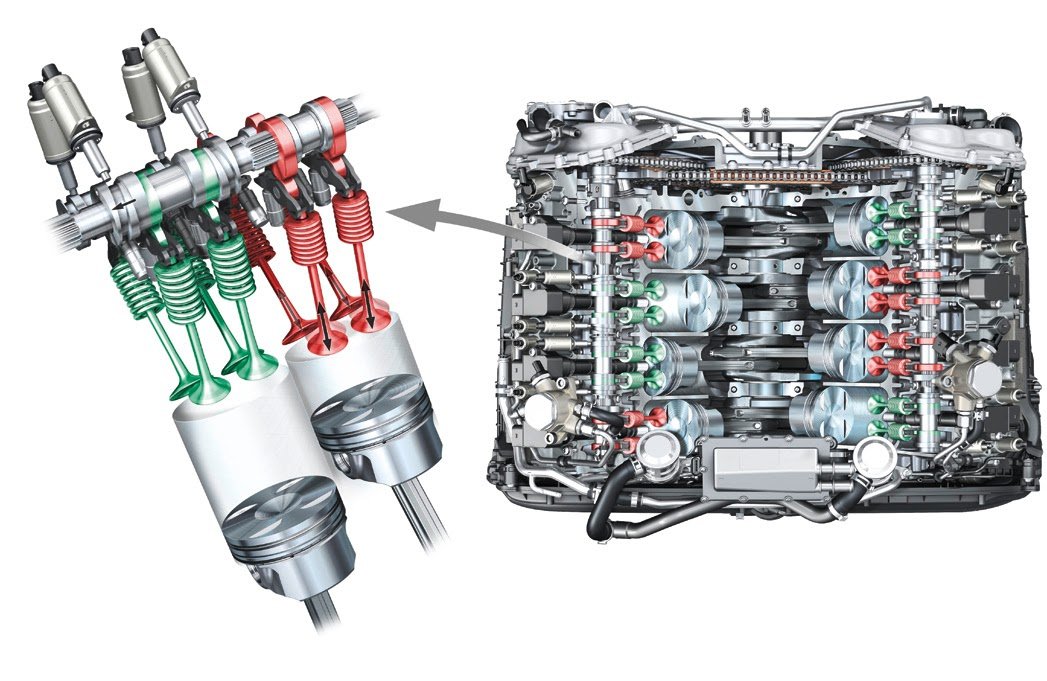Hello, Guys like BMW Valvetronic Audi has its own technology. Audi cylinder on demand uses Audi’s valve lift system.
Audi Cylinder on demand
This is a new brilliant technology introduced by Audi. When there is strong acceleration the car will run on all cylinders (8-cylinders). If there is a steady acceleration and at cruising speed, Audi’s valve lift technology will shift from 8-cylinder to 4-cylinder. This system detects your engine speed and automatically shifts from 8 cylinders to 4-cylinder, it helps the remaining four-cylinder run more efficiently.
There is also active noise control and active engine mounts. They ensure that the car’s occupants do not hear or sense any disturbing noise or vibration even if the engine is operating in the four-cylinder mode.
The upper limit for the deactivation to take effect, depending on engine speed, is between about 25 and 40 per cent of maximum torque. In this operating range, the mean effective pressure rises to eight bar. Coolant temperature must be at least 30°C (86°F) and third gear or higher must have been selected. The engine must be running at more than idle speed, namely between 960 and 3,500 RPM.
If these preconditions are satisfied, the system closes the inlet and exhaust valves of two cylinders on each bank. The V8 continues to run as a V4 with a regular firing order, but with the mixture in only two cylinders instead of four being ignited on each revolution of the crankshaft. Instead of 1 – 5 – 4 – 8 – 6 – 3 – 7 – 2, the firing order is then 1 – 4 – 6 – 7; efficiency in the active cylinders is increased because the operating points are displaced toward higher loads.
AVS (Audi Valvelift System)
The necessary valves are closed on the four camshafts by an Audi valve lift system (AVS). It is controlled electromagnetically, and have an additional “zero-lift” cam; since this does not move the cam followers, the valve springs keep the valves closed. At the same time, the engine management system shuts down fuel injection and ignition.
In the deactivated cylinders, the pistons continue to move because they are being driven by the crankshaft; before the valves close the combustion chambers are again filled with fresh air. This intake of fresh air lowers the pressure in the cylinders and reduces the energy needed to move the pistons – an important factor for increased efficiency.
This system deactivates as soon as the driver foots down on the accelerator pedal. Now, this system works on again 8-cylinder, which also works smoothly and quickly as switching to the 4-cylinder system. It takes around 3 seconds for both activation and deactivation of cylinders. Therefore Audi developed a control logic that monitors the movement of the accelerator and brake pedal and steering wheel used by the driver. If an irregular pattern is detected, cylinder deactivation may be inhibited in certain situations, like when the car is driven hard on the city roads. Cylinder deactivation lasting only a few seconds would tend to increase fuel consumption rather than decreasing it.


